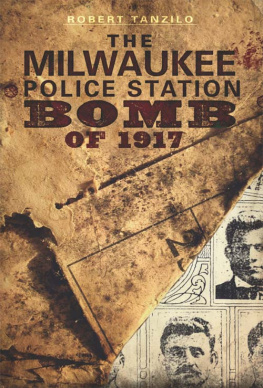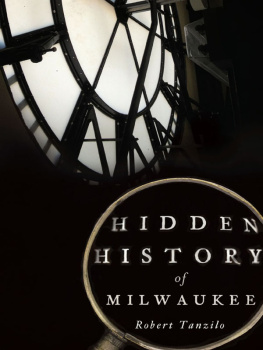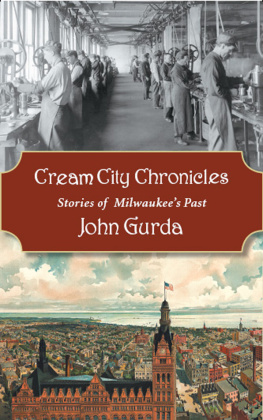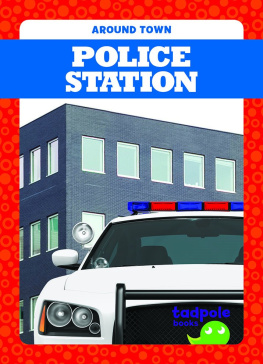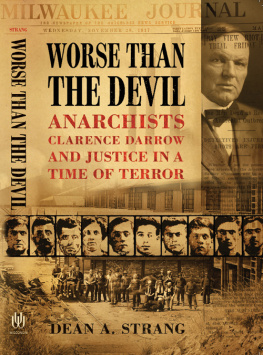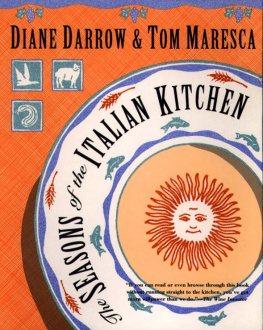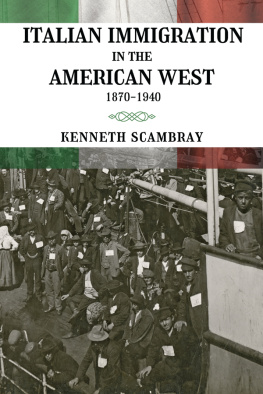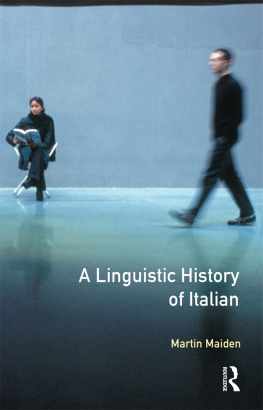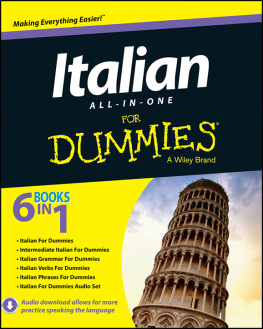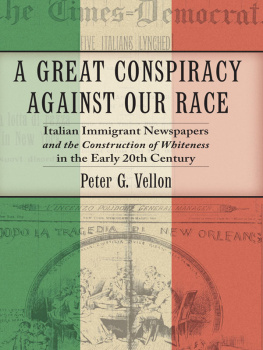Published by The History Press
Charleston, SC 29403
www.historypress.net
Copyright 2010 by Robert Tanzilo
All rights reserved
Front cover collage from the Milwaukee Sentinel, December 1, 1917.
All images are from the authors collection unless otherwise noted.
This book was published in somewhat different form as Milwaukee 1917: Uno Scontro tra Italoamericani in 2006 in Italy by Editoriale Umbra.
e-book edition 2012
ISBN 978.1.61423.278.0
Library of Congress Cataloging-in-Publication Data
Tanzilo, Robert, 1966
The Milwaukee police station bombing of 1917 / Robert Tanzilo.
p. cm.
Inclues bibliographical references and index.
print edition ISBN 978-1-60949-067-6 1.
Riots--Wisconsin--Milwaukee--History--20th century. 2. Social conflict--Wisconsin--Milwaukee--History--20th century. 3. Bombings--Wisconsin--Milwaukee--History--20th century. 4. Giuliani, August. 5. Evangelical Church--Clergy--Biography. 6. Italian Americans--Wisconsin--Milwaukee--Social conditions--20th century. 7. Trials (Riots)--Wisconsin--Milwaukee--History--20th century. 8. Bay View (Milwaukee, Wis.)--History--20th century. 9. Milwaukee (Wis.)--History--20th century. 10. World War, 1914-1918--Social aspects--Wisconsin--Milwaukee. I. Title.
HV6483.M55T36 2010
363.323097759509041--dc22
2010031977
Notice: The information in this book is true and complete to the best of our knowledge. It is offered without guarantee on the part of the author or The History Press. The author and The History Press disclaim all liability in connection with the use of this book.
All rights reserved. No part of this book may be reproduced or transmitted in any form whatsoever without prior written permission from the publisher except in the case of brief quotations embodied in critical articles and reviews.
For Kathy, Luca and Valentina
CONTENTS
PREFACE
On a chilly day in early September 1917, Italian immigrant pastor August Giuliani led a band of Protestant evangelists from Milwaukees heavily Italian Third Ward on a jaunt to the smaller Italian enclave of Bay View on the citys near south side.
Giuliani, a former priest, had hopped the Delaware Avenue streetcar with some of his flock on the previous two Sundays, too, setting up on the corner of Bishop and Potter Streets with an organist and two trumpeters. There, they sang patriotic songs and encouraged those in the neighborhood to do their duty and support the American war effort.
Each time, Giuliani met with resistance from people he deemed antiwar anarchists. But Giuliani was unwelcome, it was said in the neighborhood, not because he preached patriotism but because he defamed Catholicism in his attempts to convert the Italians.
So, after being shouted down twice, Giuliani approached the authorities, and four policemen were on hand for his third meeting at Bishop and Potter on that Sunday, September 9, 1917. The tune of Columbia, the Gem of the Ocean was struck up, and the faithful began to sing. A crowd gathered, and Giulianis group was jeered.
When the police approached the hecklers, guns were drawn and shots began to whiz and whirr through the intersection as the crowds dispersed. When the smoke cleared, two policemen were hurt, two Bay View Italians were mortally wounded and two more were injured. One was shot in the back.
Two months later, a bomblinked to the Bay View affair by the pastor, police and the newspaperswas found at Giulianis Third Ward church. It was carried to the central police station by a parishioner, where it exploded, killing nine policemen and a civilian. The tragedy marked the largest loss of police life in a single incident in the United States until September 11, 2001.
Not a week later, the trial of the Bay View Italians began in a city inflamed with fear, distrust and vengeance. Could they receive a fair trial in this atmosphere? Soon, nationally recognized figures like attorney Clarence Darrow and radical heroine Emma Goldman would become involved in the Milwaukee affair.
How did this midwestern city end up in such a situation? Was Milwaukee a hotbed of anarchist activity? What effect would these events have beyond Milwaukee?
ACKNOWLEDGEMENTS
I would like to thank the following: Kathy McCann, more than anyone else, for listening to this story for going on two decades now; Mom and Dad; the late John D. Anello, Milwaukee Police Captain Stephen Basting and the Milwaukee Police Historical Society; Andrea Biscaro for his research and his friendship; Sarah Blair at United Theological Seminary Library; Carol Bonomo Albright at Italian Americana; Kimberly Jacobsen Butler at North Central Colleges Oesterle Library; Comune di Calvene; Dominic Candeloro for encouragement; Mario Carini and the Italian Community Center of Milwaukee; Francesco Carri in Taranto; Tim Cuprisin; James P. Danky and Harry Miller at the Wisconsin Historical Society; Al Denurra; Vince Eller at Garrett-Evangelical Theological Seminary; my brothers in the Italian American Giuseppe Garibaldi Society of Bay View; the staff at the Emma Goldman Papers at Berkeley; Michael Gordon; Jennifer Guglielmo; John Gurda; Marty Hintz for unwittingly hooking me up; Ben Gibson and the staff at The History Press; Jay Hyland at Jewish Museum Milwaukee; Dave Luhrssen; Katherine Nardini for her reminiscences and photographs and her kindness; Daniel Necas at the Immigration History Research Center; Comune di Nervesa; my friends at OnMilwaukee.com; Reverend Andy Oren; Vincenzo Pacelli and Francesca Piermartini in Vignanello; Nunzio Pernicone; Salvatore Salerno; the late A. David Schwartz, who told me if I wrote this book, hed publish itbut, alas, I took too long; Mark Shenise at General Commission on Archives and History of the United Methodist Church; Alberto Sorbini, Dott.ssa Catia Monacelli and everyone at Editoriale Umbria and il Museo dellEmigrazione Pietro Conti in Gualdo Tadino (PG); Dean Strang; Bob Teske, Amanda Wynne and Steve Daly at the Milwaukee County Historical Society; the late dean of Italian American studies Rudy Vecoli, who was always encouraging, interested and ready with suggestions and help; and Christina Ziino and Joe Ziino Sr. As in any work that requires copious research, many helped me uncover relevant and useful information. If I have neglected to include anyone, I beg forgiveness.
Special thanks to Ernesto Milani, whose translation made the Italian edition of this book a reality. His advice, suggestions, unending curiosity, encouragement and amicizia have enriched this and other projects on which we have collaborated and I hope more will follow.
Portions of this work appeared, in altered and abridged form, in an article published in Italian Americana 23, no. 2, Summer 2005.
THE MISSIONARIES
From Italys arrogant priesthood,
From the darkness of guilt and sin
Into the light of Christs redemption
Into glad fellowship with him.
Came missionary Giuliani
To Milwaukees teeming domain,
Serving our Italian Mission
His countryman for Christ to gain.
Through toil and much persecution,
He labors by day and by night

